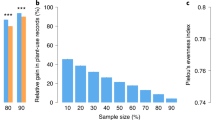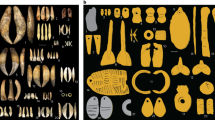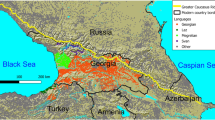Abstract
Human life depends on plant biodiversity and the ways in which plants are used are culturally determined. Whilst anthropologists have used phylogenetic comparative methods (PCMs) to gain an increasingly sophisticated understanding of the evolution of political, religious, social and material culture, plant use has been almost entirely neglected. Medicinal plants are of special interest because of their role in maintaining people’s health across the world. PCMs in particular, and cultural evolutionary theory in general, provide a framework in which to study the diversity of medicinal plant applications cross-culturally, and to infer changes in plant use over time. These methods can be applied to single medicinal plants as well as the entire set of plants used by a culture for medicine, and they account for the non-independence of data when testing for floristic, cultural or other drivers of plant use. With cultural, biological and linguistic diversity under threat, gaining a deeper and broader understanding of the variation of medicinal plant use through time and space is pressing.
This is a preview of subscription content, access via your institution
Access options
Access Nature and 54 other Nature Portfolio journals
Get Nature+, our best-value online-access subscription
$29.99 / 30 days
cancel any time
Subscribe to this journal
Receive 12 digital issues and online access to articles
$119.00 per year
only $9.92 per issue
Buy this article
- Purchase on Springer Link
- Instant access to full article PDF
Prices may be subject to local taxes which are calculated during checkout

Similar content being viewed by others
References
WHO traditional medicine strategy: 2014–2023 (World Health Organisation, 2013).
De Boer, H. J. & Lamxay, V. Plants used during pregnancy, childbirth and postpartum healthcare in Lao PDR: A comparative study of the Brou, Saek and Kry ethnic groups. J. Ethnobiol. Ethnomed. 5, 25 (2009).
Menendez-Baceta, G. et al. The importance of cultural factors in the distribution of medicinal plant knowledge: A case study in four Basque regions. J. Ethnopharmacol. 161, 116–127 (2015).
Quave, C. L. & Pieroni, A. A reservoir of ethnobotanical knowledge informs resilient food security and health strategies in the Balkans. Nat. Plants 1, 14021 (2015).
Saslis-Lagoudakis, C. H. et al. The evolution of traditional knowledge: Environment shapes medicinal plant use in Nepal. P. R. Soc. B. 281, 20132768 (2014).
Shepard, G. H. Sensory ecology of medicinal plant therapy in two Amazonian societies. Am. Anthropol. 106, 252–266 (2004).
Maffi, L. Linguistic cultural and biological diversity. Annu. Rev. Anthropol. 29, 599–617 (2005).
Begossi, A., Hanazaki, N. & Tamashiro, J. Y. Medicinal plants in the Atlantic forest (Brazil): Knowledge, use, and conservation. Hum. Ecol. 30, 281–299 (2002).
Geck, M. S., Reyes García, A. J., Casu, L. & Leonti, M. Acculturation and ethnomedicine: A regional comparison of medicinal plant knowledge among the Zoque of southern Mexico. J. Ethnopharmacol. 187, 146–159 (2016).
Vandebroek, I., Reyes-García, V., Albuquerque, U. P., Bussmann, R. & Pieroni, A. Local knowledge: Who cares? J. Ethnobiol. Ethnomed. 7, 35 (2011).
Kirby, K. R. et al. D-PLACE: a global database of cultural, linguistic and environmental diversity. PLoS ONE 11, e0158391 (2016).
Garamszegi, L. Z. (ed.). Modern phylogenetic comparative methods: Concepts and practice. (Springer-Verlag, Berlin, 2014).
Felsenstein, J. Phylogenies and the comparative method. Am. Nat. 125, 1–15 (1985).
Blute, M. & Jordan, F. M. in The Oxford handbook of evolution, biology, and society (ed. Hopcroft, R. J.) 621–642 (Oxford Univ. Press, Oxford, 2018).
Cornwell, W. & Nakagawa, S. Phylogenetic comparative methods. Curr. Biol. 27, R333–R336 (2017).
Gray, R. D., Greenhill, S. J. & Ross, R. M. The pleasures and perils of Darwinizing culture (with phylogenies). Biol. Theory 2, 360–375 (2007).
Mace, R. & Holden, C. J. A phylogenetic approach to cultural evolution. Trends Ecol. Evol. 20, 116–121 (2005).
Tylor, E. B. On a method of investigating the development of institutions applied to the laws of marriage and descent. J. Roy. Anthropol. Inst. 18, 245–272 (1889).
Mace, R. & Pagel, M. The comparative method in anthropology. Curr. Anthropol. 35, 549–564 (1994).
Gray, R. D. & Watts, J. Cultural macroevolution matters. Proc. Natl Acad. Sci. USA 114, 7846–7852 (2017).
Botero, C. A. et al. The ecology of religious beliefs. Proc. Natl Acad. Sci. USA 111, 16784–16789 (2014).
Currie, T. E. Cultural evolution branches out: The phylogenetic approach in cross-cultural research. Cross Cult. Res. 47, 102–130 (2013).
Jordan F. M. in Kinship systems: Change and reconstruction (eds McConvell, P. et al.) 43–58 (Univ. Utah Press, Salt Lake City, UT, 2013).
Levinson, S. C. & Gray, R. D. Tools from evolutionary biology shed new light on the diversification of languages. Trends Cogn. Sci. 16, 167–173 (2012).
Mace, R. & Jordan, F. M. Macro-evolutionary studies of cultural diversity: A review of empirical studies of cultural transmission and cultural adaptation. Philos. T. Roy. Soc. B. 366, 402–411 (2011).
Currie, T. E. & Mace, R. Evolution of cultural traits occurs at similar relative rates in different world regions. Proc. R. Soc. B 281, 20141622 (2014).
Voeks, R. A. Disturbance pharmacopoeias: MEdicina and myth from the humid tropics. Ann. Assoc. Am. Geogr. 94, 868–888 (2004).
Reznick, D. A. & Ricklefs, R. E. Darwin’s bridge between microevolution and macroevolution. Nature 457, 837–842 (2009).
Medeiros, P. M. et al. The use of medicinal plants by migrant people: Adaptation, maintenance, and replacement. Evid.-Based Compl. Alt. 2012, 807452 (2012).
Pieroni, A. & Vandebroek, I. Travelling cultures and plants: The ethnobiology and ethnopharmacy of migrations. (Berghahn Books, New York, NY, 2007).
Van Andel, T. et al. In search of the perfect aphrodisiac: Parallel use of bitter tonics in West Africa and the Caribbean. J. Ethnopharmacol. 143, 840–850 (2012).
Volpato, G., Godínez, D. & Beyra, A. Migration and ethnobotanical practices: the case of tifey among Haitian immigrants in Cuba. Hum. Ecol. 37, 43–53 (2009).
Vossen, T., Towns, A., Ruysschaert, S., Quiroz, D. & van Andel, T. Consequences of the Trans-Atlantic slave trade on medicinal plant selection: Plant use for cultural bound syndromes affecting children in Suriname and Western Africa. PLoS ONE 9, e112345 (2014).
Touwaide, A. & Appetiti, E. Knowledge of Eastern material medica (Indian and Chinese) in pre-modern Mediterranean medical traditions: A study in comparative historical ethnopharmacology. J. Ethnopharmacol. 148, 361–378 (2013).
Leonti, M., Staub, P. O., Cabras, S., Castellanos, M. E. & Casu, L. From cumulative cultural transmission to evidence-based medicine: evolution of medicinal plant knowledge in Southern Italy. Front. Pharmacol. 6, 207 (2015).
Leonti, M. The future is written: Impact of scripts on the cognition, selection, knowledge and transmission of medicinal plant use and its implications for ethnobotany and ethnopharmacology. J. Ethnopharmacol. 134, 542–555 (2011).
Reyes-García, V. et al. Cultural transmission of ethnobotanical knowledge and skills: an empirical analysis from an Amerindian society. Evol. Hum. Behav. 30, 274–285 (2009).
Kendal, R. L. et al. Social learning strategies: bridge-building between fields. Trends Cogn. Sci. 22, 651–665 (2018).
Henrich, J. & Broesch, J. On the nature of cultural transmission networks: Evidence from Fijian villages for adaptive learning biases. Phil. Trans. R. Soc B 366, 1139–1148 (2011).
Albuquerque, U. P. & Júnior, W. S. F. What do we study in evolutionary ethnobiology? Defining the theoretical basis for a research program. Evol. Biol. 44, 206–215 (2017).
Moerman, D. E., Pemberton, R. W., Kiefer, D. & Berlin, B. A comparative analysis of five medicinal floras J. Ethnobiol. 19, 49–67 (1999).
Hawkins, J. A. & Teixidor-Toneu, I. Defining ‘ethnobotanical convergence’. Trends Plant Sci. 22, 639–640 (2017).
Patterson, C. in Problems of phylogenetic reconstruction (eds Joysey, K. A. & Friday, A. E.) 21–74 (Academic Press, London, 1982).
Nunn, C. L. The comparative approach in evolutionary anthropology and biology. (Univ. Chicago Press, Chicago, 2011).
Bowern, C. et al. Loan and inheritance patterns in hunter-gatherer ethnobiological systems. J. Ethnobiol. 34, 195–227 (2014).
O’Brien, M. J., & Lyman, R. L. Applying evolutionary archaeology: A systematic approach. (Springer, NewYork, NY, 2000).
Steward, J. H. Diffusion and independent invention: A critique of logic. Am. Anthropol. 31, 491–495 (1929).
Patterson, C. Homology in classical and molecular biology. Mol. Biol. Evol. 5, 603–625 (1988).
De Pinna, M. G. G. Concepts and tests of homology in the cladistic paradigm. Cladistics 7, 367–394 (1991).
Hawkins, J. A. & Hughes, C. E. & Scotland, R. W. Primary homology assessment, characters and character states. Cladistics 13, 275–283 (2005).
Borgerhoff Mulder, M., Nunn, C. L. & Towner, M. C. Cultural macroevolution and the transmission of traits. Evol. Anthr. 15, 52–64 (2006).
Bostoen, K., Grollemund, R. & Muluwa, J. K. Climate-induced vegetation dynamics and the Bantu expansion: evidence from Bantu names for pioneer trees (Elaeis guineensis, Canarium schweinfurthii, and Musanga cecropioides). C. R. Geosci. 345, 336–349 (2013).
Perrier, X. et al. Multidisciplinary perspectives on banana (Musa spp.) domestication. Proc. Natl Acad. Sci. USA 108, 11311–11318 (2011).
Fuller, D. Q. & Madella, M. Banana cultivation in South Asia and East Asia: a review of the evidence from archaeology and linguistics. ERA 7, 333–351 (2009).
Fuller, D. Q., Boivin, N., Hoogervorst, T. & Allaby, R. Across the indian ocean: The prehistoric movement of plants and animals. Antiquity 85, 544–558 (2011).
Fuller, R. J. M. Using historical linguistics to describe Polynesian ethnomycology. Econ. Bot. 63, 388–396 (2009).
Rangan, H. et al. New genetic and linguistic analyses show ancient human influence on Baobab evolution and distribution in Australia. PLoS ONE 10, e0119758 (2015).
Dixon, R. M. W. Australian languages: their nature and development. (Cambridge Univ. Press, Cambridge, 2002).
McMahon, A. & McMahon, R. in Time Depth in Historical Linguistics Vol. 1 (eds McMahon, A. et al.) 59–73 (McDonald Institute for Archaeological Research, Cambridge, 2000).
Heinri, hM. et al. Best practice in research: consensus statement on ethnopharmacological field studies — ConSEFS. J. Ethnopharmacol. 211, 329–339 (2018).
Teixidor-Toneu, I. et al. An ethnomedicinal survey of a Tashelhit-speaking community in the High Atlas, Morocco. J. Ethnopharmacol. 188, 96–110 (2016).
Lacuna-Richman, C. The use of non-wood forest products by migrants in a new settlement: Experiences of a Visayan community in Palawan, Philippines. J. Ethnobiol. Ethnomed. 2, 36 (2006).
Beheim, B. A. & Bell, A. V. Inheritance, ecology and the evolution of canoes of east Oceania. Proc. R. Soc. B 278, 3089–3095 (2011).
Leonti, M., Sticher, O. & Heinrich, M. Antiquity of medicinal plant usage in two Macro-Mayan ethnic groups (México). J. Ethnopharmacol. 88, 119–124 (2003).
Chirkova, K., Huber, F. K., Weckerle, C. S., Daudey, H. & Pincuo, G. Plant names as traces of the past in Shuiluo valley, China. J. Ethnobiol. 36, 192–214 (2016).
Bowern, C. in Verba Docenti: Studies in Historical and Indo-European Linguistics (ed. Nussbaum, A.) 39–53 (Beech Stave Press, Ann Arbor, NY, 2007).
Haspelmath, M. in Loanwords in the world’s languages: A comparative handbook (eds Haspelmath, M. & Tadmor, U.) 35–54 (De Gruyter Mouton, Berlin, 2009).
Boyd, R., Borgerhoff-Mulder, M., Durham, W. H. & Richerson, P. J. in Human by nature: Between biology and the social sciences (eds Mitchell, S. D. et al.) 355–386 (Lawrence Erlbaum Associates, Mahwah, NJ, 1997).
Greenhill, S. J., Currie, T. E. & Gray, R. D. Does horizontal transmission invalidate cultural phylogenies? Proc. R. Soc. B 276, 2299–2306 (2009).
Nunn, C. L., Mulder, M. B. & Langley, S. Comparative methods for studying cultural trait evolution: a simulation study. Cross-Cult. Res. 40, 177–209 (2006).
Foster, G. M. Disease etiologies in non-western medical systems. Med.l Anthropol. 78, 773–782 (1976).
Hsu, E. & Harris, S. (eds) Plants, health and healing: On the interface of ethnobotany and medical anthropology (Berhahn Books, Oxford, 2010).
Waldstein, A. & Adams, C. The interface between medical anthropology and medical ethnobiology. J. Roy. Anthropol. Inst. 12, 95–118 (2006).
Greenwood, B. Cold or spirits? Choice and ambiguity in Morocco’s pluralistic medical system. Soc. Sci. Med. 15, 219–235 (1981).
Obermeyer, C. M. Pluralism and pragmatism: knowledge and practice of birth in Morocco. Med. Anthropol. Q. 14, 180–201 (2000).
Teixidor-Toneu, I., Martin, G. J., Puri, R. K., Ouhammou, A. & Hawkins, J. A. Treating infants with frigg: Linking disease aetiologies, medicinal plant use and care-seeking behaviour in southern Morocco. J. Ethnobiol. Ethnomed. 13, 4 (2017).
Thomas, E., Vandebroek, I., Van Damme, P., Semo, L. & Noza, Z. Susto etiology and treatment according to Bolivian Trinitario people: a “masters of the animal species” phenomenon. Med. Anthropol. Q. 23, 298–319 (2009).
Ellen, R. & Puri, R. K. Conceptualising ‘core’ medicinal floras: A comparative and methodological study of phytomedical resources in related Indonesian populations. Conserv. Soc. 14, 345–358 (2016).
Shennan, S. Canoes and cultural evolution. Proc. Natl Acad. Sci. USA 105, 3175–3176 (2008).
Gairola, S., Sharma, J. & Bedi, Y. S. A cross-cultural analysis of Jammu, Kashmir and Ladakh (India) medicinal plant use. J. Ethnopharmacol. 155, 925–986 (2014).
Molares, S. & Ladio, A. Ethnobotanical review of the Mapuche medicinal flora: Use patterns on a regional scale. J. Ethnopharmacol. 122, 251–260 (2009).
Collins, S., Martins, X., Mitchell, A., Teshome, A. & Arnason, J. T. Quantitative ethnobotany of two East Timorse cultures. Econ. Bot. 60, 347–361 (2006).
Heinrich, M., Ankli, A., Frei, B., Weimann, C. & Sticher, O. Medicinal plants in Mexico: healers’ consensus and cultural importance. Soc. Sci. Med. 47, 1859–1871 (1998).
Leporatti, M. L. & Ivancheva, S. Preliminary comparative analysis of medicinal plants used in the traditional medicine of Bulgaria and Italy. J. Ethnopharmacol. 87, 123–142 (2003).
Saslis-Lagoudakis, C. H. et al. The use of phylogeny to interpret cross-cultural patterns in plant use and guide medicinal plant discovery: an example from Pterocarpus. PLoS ONE 6, e22275 (2011).
Saslis-Lagoudakis, C. H. et al. Phylogenies reveal predictive power of traditional medicine in bioprospecting. Proc. Natl Acad. Sci. USA 109, 15835–15840 (2012).
Yessoufou, K., Daru, B. H. & Muasya, A. M. Phylogenetic exploration of commonly used medicinal plants in South Africa.Mol. Ecol. Res. 15, 405–413 (2014).
Rønsted, N., Savolainen, V., Mølgaard, P. & Jäger, A. K. Phylogenetic selection of Narcissus species for drug discovery. Biochem. Syst. Ecol. 36, 417–422 (2008).
Zhu, F. et al. Clustered patterns of species origins of nature-derived drugs and clues for future bioprospecting. Proc. Natl Acad. Sci. USA 108, 12943–12948 (2016).
Souza, E. N. F., Williamson, E. M. & Hawkins, J. A. Which plants used in ethnomedicine are characterized? phylogenetic patterns in traditional use related to research effort. Front. Plant Sci. 9, 834 (2018).
Berlin, B. Folk systematics in relation to biological classification and nomenclature. Annu. Rev. Ecol. Evol. Syst. 4, 259–271 (1973).
Teixidor-Toneu, I. The evolution of medicinal floras: Insights from Moroccan medicinal plant knowledge transmission. Doctoral dissertation, University of Reading (2017).
Hammarström, H., Forkel, R., Haspelmath, M. & Bank, S. Glottolog 2.7 (Max Planck Institute for the Science of Human History, 2016); http://glottolog.org
Turchin, P. et al. Seshat: the global history databank Cliodynamics 6, 77–107 (2015).
Cross-Linguistic Linked Data (Max Planck Society, 2018); http://clld.org/datasets.html.
Albuquerque, U. P. et al. The current status of ethnobiological research in Latin America: gaps and perspectives. J Ethnobiol. Ethnomed. 9, 72 (2013).
Cámara-Leret, R., Paniagua-Zambrana, N., Balslev, H. & Macía, M. J. Ethnobotanical knowledge is vastly under-documented in northwestern South America. PLoS ONE 9, e85794 (2014).
Bennett, B. C. & Balick, M. J. Does the name really matter? The importance of botanical nomenclature and plant taxonomy in biomedical research. J. Ethnopharmacol. 152, 387–392 (2014).
Rivera, D. et al. What is in a name? the need for accurate scientific nomenclature for plants. J. Ethnopharmacol. 152, 393–402 (2014).
Heinrich, M., Edwards, S., Moerman, D. E. & Leonti, M. Ethnopharmacological field studies: a critical assessment of their conceptual basis and methods. J.Ethnopharmacol. 124, 1–17 (2009).
Souza, E. N. F. & Hawkins, J. A. Comparison of herbarium label data and published medicinal use: Herbaria as an underutilized source of ethnobotanical information. Econ. Bot. 71, 1–12 (2017).
Leonti, M. & Verpoorte, R. Traditional Mediterranean and European herbal medicines. J. Ethnopharmacol. 199, 161–167 (2017).
Acknowledgements
We would like to thank Anneleen Kool for helpful discussions during the preparation of this manuscript. I.T.-T. and J.A.H received funding from the European Union’s Seventh Framework Programme for research, technological development and demonstration under the Grant agreement no. 606895. F.M.J was supported by the European Research Council’s Horizon 2020 research and innovation programme under Starting Grant no. 639291.
Author’s contributions
I.T.-T., F.M.J and J.A.H conceived the ideas. J.A.H. led the writing of the manuscript. All authors contributed critically to writing and gave their final approval for publication.
Author information
Authors and Affiliations
Corresponding author
Ethics declarations
Competing interests
The authors declare no competing interests.
Additional information
Publisher’s note: Springer Nature remains neutral with regard to jurisdictional claims in published maps and institutional affiliations.
Rights and permissions
About this article
Cite this article
Teixidor-Toneu, I., Jordan, F.M. & Hawkins, J.A. Comparative phylogenetic methods and the cultural evolution of medicinal plant use. Nature Plants 4, 754–761 (2018). https://doi.org/10.1038/s41477-018-0226-6
Received:
Revised:
Accepted:
Published:
Issue Date:
DOI: https://doi.org/10.1038/s41477-018-0226-6
This article is cited by
-
Ethnobotanical study on ritual plants used by Hani people in Yunnan, China
Journal of Ethnobiology and Ethnomedicine (2024)
-
A breakthrough in phytochemical profiling: ultra-sensitive surface-enhanced Raman spectroscopy platform for detecting bioactive components in medicinal and edible plants
Microchimica Acta (2024)
-
The complete chloroplast genome sequence of Artemisia stechmanniana (Asteraceae): genome structure and phylogenetic analysis
Biologia (2024)
-
Carbon nanodots constructed by ginsenosides and their high inhibitory effect on neuroblastoma
Journal of Nanobiotechnology (2023)
-
Identification of three cultivated varieties of Scutellaria baicalensis using the complete chloroplast genome as a super-barcode
Scientific Reports (2023)



